

March 2013
IN THIS ISSUE:
![]()
- Senators Cardin and Mikulski visit Clinical Center to address impact of sequestration
- Dr. Richard J. Whitley, Scholar and Educator in Residence, visits the Clinical Center
- 3 Blind Mice leading the way toward a new vision of blindness
- Dr. Chester A. Mathis gives Doppman lecture
- Debbie Fatula retires after 36 years of service
- Bernie Crago, beloved 7 SE nurse, retires
- Unlock a new career path with the NIH Management Intern Program
- Upcoming Events
Print this Issue ![]() (186 KB)
(186 KB)
ABOUT CC NEWS:
![]()
Published monthly for CC employees by the Office of Communications and Media Relations. News, article ideas, calendar events, letters, and photographs are welcome. Submissions may be edited.
Clinical Center News
National Institutes of Health
Building 10, 10 Center Drive
Room 6C-420,
Bethesda, MD 20892-1504
Tel: 301-594-5791
Fax: 301-402-4984
QUICK LINKS:
![]()


Stop searching on your own for clinical studies.
Let opportunities to join a study find you.
The NIH Clinical Center has joined ResearchMatch, an online, national clinical research registry that "matches" people who want to participate in clinical studies with researchers who are seeking volunteers. To learn more, visit researchmatch.org/?rm=Volunteer3
Senators Cardin and Mikulski visit Clinical Center to address impact of sequestration
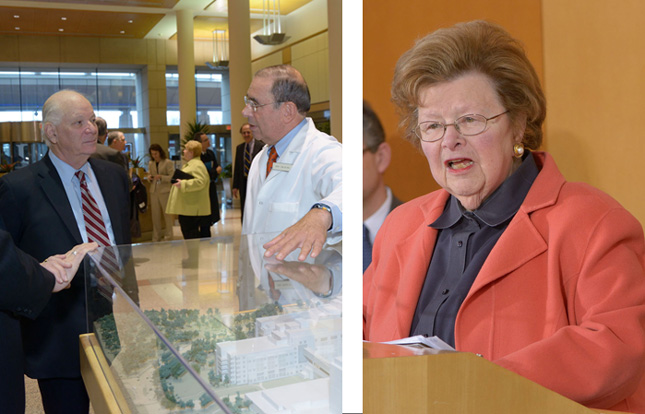 | |
| Left: CC Director Dr. John I. Gallin shows Senator Benjamin Cardin (D-MD) a model of the Clinical Center in the lobby of Building 10 before a Town Hall Meeting on Feb. 8; Right: Senator Barbara Mikulski (D-MD) pledges her support for the work of NIH at a press conference held on Feb. 20. | |
In the weeks prior to the threat of sequestration, Sen. Barbara Mikulski (D-MD) and Sen. Benjamin Cardin (D-MD) both visited the Clinical Center to discuss how across-the-board cuts would affect the important work of NIH.
Cardin sponsored a Town Hall Meeting held in Masur Auditorium on Feb. 8. The Senator discussed the overall economic situation, the current federal budget and its impact on federal workers, and took questions from the audience. "You are the frontline of service not only for our country, but for our world," he said. "What you do here is world class. There is no comparable facility anywhere in the world."
When asked what federal workers could do to protest sequestration, Cardin spoke about the need to "put a human face" on the situation. "Go out there and tell people what you do," he said. "Explain to them why the work you do is so important."
On Feb. 20, as the March 1 sequestration deadline approached, Mikulski, chairwoman of the Senate Appropriations Committee, held a press conference aimed at drawing attention to the devastating effects sequestration would have on the biomedical research community, health, innovation, and jobs across Maryland and the nation.
After touring the neuro-technology lab with the Senator and her staffers, NIH Director Dr. Francis Collins introduced Mikulski to the press. In his opening remarks, Collins stressed that sequestration would have "far-reaching negative effects" not only on medical research, but also on patients and their families.
"Sequestration was never meant to happen," Mikulski said. "It was meant to be such a horrible prospect that it would force Congress to make the decisions that needed to be made in order to avoid it. We've got to stop it."
Collins said that sequestration would cut $1.6 billion from NIH—a devastating loss of funds needed to continue groundbreaking and lifesaving research. Nobel laureate Dr. Carol Greider, the Daniel Nathans Professor and Director of Molecular Biology and Genetics at Johns Hopkins University, explained what such cuts would mean to research efforts in medical research institutions across the country. "People think of research dollars as being used to purchase laboratory equipment, Petri dishes, things like that," she said. "But the bulk of these funds are used to support the work of young scientists. If we can't fund their research, if we can't offer them a viable career path, we may lose a whole generation of innovators."
Despite the seriousness of the occasion, the theme of the day was hope. "I call NIH the National Institutes of Hope," Mikulski said, praising its "vitality, vibrancy, and vision."
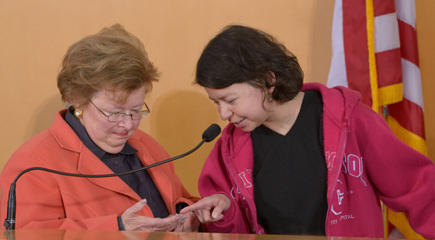 | |
| Clinical Center patient Felicia Sanchez shares a memento with Sen. Mikulski after speaking about NIH as a source of hope. | |
Felicia Sanchez, a 23-year-old patient with severe coccidioidomycosis or Valley Fever, a rare disease caused by a fungal infection that enters the body through the lungs, spoke to the press about what the work of NIH had meant to her. Like so many others, she came to the Clinical Center when doctors in her home state said there was nothing they could do for her. "Within a month of coming here, I was better," Sanchez said. "I could go home again and enjoy my life. NIH gave me back something I had lost—it gave me hope."
Senator Cardin's Town Hall event was videotaped, and can be viewed at http://videocast.nih.gov/.
Dr. Richard J. Whitley, Scholar and Educator in Residence, visits the Clinical Center
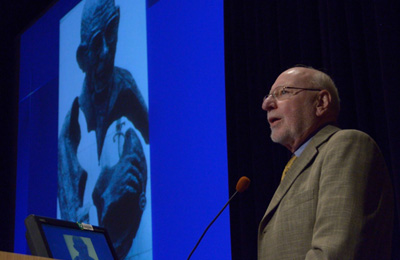 | |
| Dr. Richard J. Whitley, the first recipient of the new NIH Clinical Center Distinguished Clinical Research Scholar and Educator in Residence, lecturing on "Herpes Simplex Virus: From Encephalitis to Gene Therapy," part of the Grand Rounds Contemporary Clinical Medicine: Great Teachers Series. | |
Dr. Richard J. Whitley, Distinguished Professor, Loeb Scholar in Pediatrics, and Professor of Pediatrics, Microbiology, Medicine, and Neurosurgery at the University of Alabama at Birmingham, and the inaugural recipient of the new NIH Clinical Center Distinguished Clinical Research Scholar and Educator in Residence—was at NIH for three days last month. During his visit Whitley met with a wide range of NIH staff, including students, residents, fellows and principal investigators. This included accompanying them on rounds as well as meetings about ongoing or planned research projects. He also gave a Clinical Center Grand Rounds lecture, "Herpes Simplex Virus: From Encephalitis to Gene Therapy," as part of the Contemporary Clinical Medicine: Great Teachers series.
Author of more than 330 scholarly articles on infectious disease, Whitley was chosen for this honor for his work as a clinical investigator with outstanding scientifi c credentials who has demonstrated a commitment to biomedical research by training and mentoring future clinical and translational researchers.
In 1977, Whitley and Charles Alford developed vidarabine, the first drug used to treat encephalitis caused by the herpes simplex virus. He and his colleagues went on to develop acyclovir, now one of the most commonly used drugs used to treat herpes simplex, as well as ganciclovir to treat congenital cytomegalovirus infection and oseltamivir for infants less than two with influenza.
In his lecture Whitley described his work, which began with "getting herpes simplex out of people's brains" and evolved into the exciting medical development of being able to "put herpes simplex back into their brains, for therapeutic purposes." He explained in some detail the process through which he and his colleagues pursued this groundbreaking work, talked about current research efforts, outlined where research is heading, and took questions from the audience after his lecture.
Support for the new annual Distinguished Clinical Research Scholar and Educator in Residence honor was made possible by funds from the Lasker Foundation's Lasker-Bloomberg Public Service Award, which in 2011 honored the Clinical Center "for serving since its inception as a model research hospital — providing innovative therapy and high-quality patient care, treating rare and severe diseases, and producing outstanding physician-scientists whose collective work has set a standard of excellence in biomedical research."
The lecture was videocast, and can be viewed at http://videocast.nih.gov. Information about Clinical Center Grand Rounds is available at http://clinicalcenter.nih.gov/about/news/grcurrent.html.
3 Blind Mice leading the way toward a new vision of blindness
The number of Americans with severe vision loss is projected to triple by 2050. Blindness requires developing new skills and adapting to a changed lifestyle–at any age. It does not have to mean a loss of independence, productivity or ambition. By leveraging a variety of resources including medical professionals, low-vision experts and rehabilitation training, and with increased awareness from friends, family, and the surrounding community, blind people can live independently, work, and enjoy fulfilling lives.
These were some of the main messages from an informative and inspiring presentation sponsored by 3 Blind Mice and the National Eye Institute in Lipsett Amphitheater on Feb. 12.
3 Blind Mice is an independent group of NIH employees dedicated to sharing information and resources related to blindness and low vision. It began in July 2011 when Teresa Shea met two other blind employees and realized there was a need for such a group at NIH. The group, which meets once a month, has grown from three to 70 members. According to Shea, who leads the group, "3 Blind Mice is open to everyone, blind, low-vision or sighted. All are welcome and encouraged to join us. In fact there are more sighted than blind people in the group."
The presentation began with the screening of a film, Going Blind, in which independent filmmaker Joseph Lovett documents his own experience of gradual loss of vision through glaucoma. The film features the stories of individuals who have experienced vision loss as a result of a variety of diseases and injuries. While quite candid about the grief, fear and anxiety that can accompany vision loss, Going Blind is an inspiring film. It shows how medical, technological and rehabilitation training advances have given new hope and new tools to those with low vision. Most inspiring, however, is the positive spirit of the people in the film, who speak of not only coping with vision loss, but how they continue to thrive.
A panel discussion was held after the film, featuring members of 3 Blind Mice, and staff from CC's Department of Rehabilitation Medicine, the National Federation of the Blind, and the National Eye Institute.
"Adapting to low vision or blindness is a process, and helping people who are experiencing it requires the collaboration and help of a team of health professionals," said Terri Nguyen, a low vision occupational therapist in the CC's Department of Rehabilitation Medicine. "When vision loss occurs, many of the routine tasks of daily life become more difficult. Training through a low vision rehabilitation program or with a low vision specialist is an important step in learning to adapt."
When someone from the audience asked, "What can sighted people do to help colleagues who are blind?" NIAAA research social worker Debby Hill answered without hesitation, and with a smile. "Ask them what they need, what could be helpful. Don't ask someone else."
For information about 3 Blind Mice, contact Teresa Shea at sheatm@mail.nih.gov or 301-402-3855. Helpful information and links to other resources are available at www.nei.nih.gov/lowvision. Those who would like to volunteer to read for the blind on the NIH Campus can contact Kathryn Sparks at ksparks@LearningAlly.org or 202-244-8990.
Dr. Chester A. Mathis gives Doppman lecture
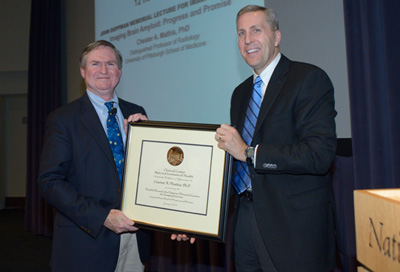 | |
| Dr. David Bluemke presents Dr. Chester A. Mathis, director of the PET facility at the University of Pittsburgh, with a certificate of appreciation at the twelfth annual Doppman lecture. Although still a research tool, PET imaging may offer one of the first objective ways to detect Alzheimer's disease. | |
The John Doppman Memorial Lecture for Imaging Sciences honors the memory of Dr. John Doppman—a superb clinician and investigator, respected colleague, gifted teacher, and generous mentor. The twelfth annual lecture was attended by Doppman's widow, Mrs. John Doppman, and his son, Christopher, who faithfully attend each year.
Doppman was a diagnostic and interventional radiologist at the NIH Clinical Center for 36 years, and chair of the Diagnostic Radiology Department for 28 of them. During his tenure in the Clinical Center, Doppman developed, refined, and performed numerous semi-surgical radiologic procedures. Under his leadership, the Diagnostic Radiology Department was among the first in the nation to have CT and MRI scanners.
This year's honored Doppman lecturer was Dr. Chester A. Mathis, an endowed chair professor of radiology and pharmaceutical sciences and director of the positron emission tomography, or PET, facility at the University of Pittsburgh. Mathis presented "Imaging Brain Amyloid: Progress and Promise."
In Alzheimer's disease, there is abnormal accumulation of a brain protein, termed amyloid. Mathis's career has been focused on methods to get PET images of amyloid proteins to accurately detect Alzheimer's disease. Alzheimer's disease usually occurs after age 65 and slowly destroys memory and thinking.
More than 4 million people in the United States are thought to have Alzheimer's disease, and the incidence is increasing with our aging population. Although still a research tool, PET imaging may offer one of the first objective ways to detect Alzheimer's disease, similar to CT or MRI scanning that can detect a brain tumor.
Over the past 30 years, Mathis has focused primarily on the development of radiotracers to image neuroreceptor systems, as well as agents to evaluate other aspects of normal and abnormal function of the central nervous system using PET imaging methodology. He was presented with the Society of Nuclear Medicine's Kuhl-Lassen Award in Brain Imaging in 2009, and the Paul C. Aebersold Award for basic science imaging research in 2010.
Debbie Fatula retires after 36 years of service
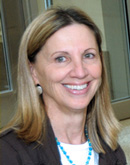 | |
| Debbie Fatula | |
Deborah Fatula retired from federal service on March 1, 2013 after a career that began with the Postal Service in Cincinnati. The majority of Debbie's career has been with the Clinical Center Office of Communications and Media Relations, where she started in an administrative position in 1977.
Debbie is known for the warm, human touch that she brought to thousands of people during her time at NIH—both NIH employees and the public.
Her extensive knowledge about NIH allowed her to direct people quickly to the places where they could gain access to the information they needed, and often, a ray of hope. We applaud her and wish her the best in retirement.
Bernie Crago, beloved 7 SE nurse, retires
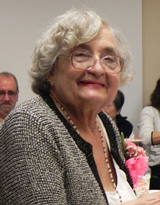 | |
| Bernie Crago | |
Many of those who worked with Bernie Crago during her 43 years of direct service nursing career at NIH came to pay homage to her at her retirement luncheon in January. Ellen Polignano, clinical research nurse, told the assembled crowd, "It is not only patients who have benefitted from Bernie's work. The staff has too." Many echoed her sentiment that Bernie was "the rock, the love, the yoga of the unit."
Bernie came to NIH in 1960 from Hahnemann and Temple University Hospitals, where she had taught medical and surgical nursing. She trained staff and provided thousands of patients with decades of exemplary patient care. Mary Ellen Cadman, clinical research advocate said, "Bernie always took the time to build relationships not only with the staff, but with the patients and their families. She nurtured everyone who came into contact with her." Dr. Maryland Pao, MD, clinical director of the Intramural Research Program, added, "Research could not happen without the nurses. Bernie exemplifies the very best."
Unlock a new career path with the NIH Management
Intern Program
Are you looking for new career opportunities? For more than 50 years, the NIH Management Intern Program has offered key resources, training, and hands-on experience to motivated NIH employees interested in pursuing a career in administration and management.
The MI Program offers outstanding NIH employees the opportunity to explore different administrative career fields, gain invaluable insight into the NIH, and to attain leadership positions.
Graduates of the two-year program have become some of NIH's most respected administrative managers including Executive Officers, Administrative Officers, Legislative Analysts, Budget Officers, Public Affairs Specialists, Contracting Officers, and Management Analysts.
MI's come from a variety of backgrounds, ranging from travel planners to scientists. Current GS-7 through GS-12 NIH employees are invited to apply. Benefits of participation include access to a senior-level mentor, an individual training budget, and opportunities to participate in challenging projects, while interacting with NIH leaders.
To learn more about eligibility, recruitment, and placement, you should attend an information session or visit www.trainingcenter.nih.gov/intern/mi.
March 8
3-4 pm
Bldg 10, Lipsett
March 19
12-1 pm
EPN, Room H
March 21
12-1 pm
Rockledge II; Rm 9112-9116
March 26
12-1 pm
Bldg. 45, Balcony A
Dates/times/locations are subject to change. Please visit www.trainingcenter.nih.gov/intern/mi for any changes.
Upcoming Events
WALS Cultural Lecture with Rita Dove
March 13, 2013
3:00 pm
Masur Auditorium
Pulitzer Prize winner and former U.S. Poet Laureate Rita Dove will deliver the J. Edward Rall Cultural Lecture as part of the 2012-2013 Wednesday Afternoon Lecture Series. She is the author of Thomas and Beulah, which earned her the 1987 Pulitzer Prize. Seating for the lecture is on a first-come, first-served basis. For more information contact Jacqueline Roberts at 301-594-6747 or robertsjm@mail.nih.gov.
SITC Event: Cancer Immunotherapy Clinical Trials: Concepts and Challenges
April 4-5, 2013
8:00 am – 5:00 pm
Masur Auditorium
The Society for Immunotherapy of Cancer will be offering a two-day workshop to outline current challenges posed by the development of therapeutic trials in immunotherapy. The workshop is open to the public and is free for government employees. Registration is required. For more information visit: http://www.sitcancer.org/sitc-meetings/cict13 [disclaimer].
 The information on this page is archived and provided for reference purposes only.
The information on this page is archived and provided for reference purposes only.